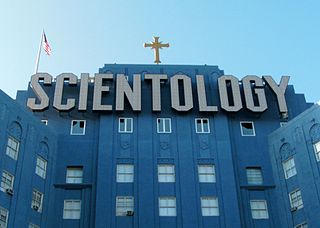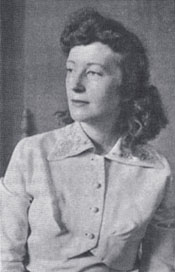
Disconnection is the severance of all ties between a Scientologist and a friend, colleague, or family member deemed to be antagonistic towards Scientology. The practice of disconnection is a form of shunning. Among Scientologists, disconnection is viewed as an important method of removing obstacles to one's spiritual growth. In some circumstances, disconnection has ended marriages and separated children from their parents.

The Church of Scientology maintains a wide variety of beliefs and practices. The core belief holds that a human is an immortal, spiritual being (thetan) that is resident in a physical body. The thetan has had innumerable past lives, some of which, preceding the thetan's arrival on Earth, were lived in extraterrestrial cultures. Based on case studies at advanced levels, it is predicted that any Scientologist undergoing auditing will eventually come across and recount a common series of past-life events.

Since its inception in 1954, the Church of Scientology has been involved in a number of controversies, including its stance on psychiatry, Scientology's legitimacy as a religion, the Church's aggressive attitude in dealing with its perceived enemies and critics, allegations of mistreatment of members, and predatory financial practices; for example, the high cost of religious training:191 and perceived exploitative practices. When mainstream media outlets have reported alleged abuses, representatives of the church have tended to deny such allegations.

The Sea Organization is a core group of Church of Scientology staff members who have signed a billion-year pledge of service to Scientology. All Scientology management organizations are controlled exclusively by members of the Sea Org. David Miscavige, the de facto leader of Scientology, is the highest-ranking Sea Org officer, holding the rank of captain.

Mary Sue Hubbard was the third wife of L. Ron Hubbard, from 1952 until his death in 1986. She was a leading figure in Scientology for much of her life. The Hubbards had four children: Diana, Quentin (1954–1976), Suzette, and Arthur.

David Miscavige is the second and current leader of the Church of Scientology. His official title within the organization is Chairman of the Board of the Religious Technology Center (RTC), a corporation that controls the trademarks and copyrights of Dianetics and Scientology. He is also referred to within the Scientology organization as "DM", "C.O.B." or "Captain of the Sea Org".

The term fair game is used to describe policies and practices carried out by the Church of Scientology towards people and groups it perceives as its enemies. Founder of Scientology, L. Ron Hubbard, established the policy in the 1950s, in response to criticism both from within and outside his organization. Individuals or groups who are "fair game" are judged to be a threat to the Church and, according to the policy, can be punished and harassed using any and all means possible. In 1968, Hubbard officially canceled use of the term "fair game" because of negative public relations it caused, although the Church's aggressive response to criticism continued.

The Rehabilitation Project Force, or RPF, is the Church of Scientology's program for members of its Sea Organization who have allegedly violated expectations or policies. This may include members who are deemed to have hidden evil intentions towards Scientology, members who are unproductive in their work or who produce poor-quality work.

Suppressive Person, often abbreviated SP, is a term used in Scientology to describe the "antisocial personalities" who, according to Scientology's founder L. Ron Hubbard, make up about 2.5% of the population. A statement on a Church of Scientology website describes this group as including notorious historic figures such as Adolf Hitler.

The Church of Scientology is a group of interconnected corporate entities and other organizations devoted to the practice, administration and dissemination of Scientology, which is variously defined as a cult, a business, or a new religious movement. The movement has been the subject of a number of controversies, and the Church of Scientology has been described by government inquiries, international parliamentary bodies, scholars, law lords, and numerous superior court judgements as both a dangerous cult and a manipulative profit-making business. In 1979, several executives of the organization were convicted and imprisoned for multiple offenses by a U.S. Federal Court. The Church of Scientology itself was convicted of fraud by a French court in 2009, a decision upheld by the supreme Court of Cassation in 2013. The German government classifies Scientology as an unconstitutional sect. In France, it has been classified as a dangerous cult. In some countries, it has attained legal recognition as a religion.

MEST is an acronym for matter, energy, space and time, and means the physical universe. It was coined in 1950 by Scientology founder L. Ron Hubbard, and is spoken as a word rather than spelling out the letters.

Gold Base is the de facto international headquarters of the Church of Scientology, located north of San Jacinto, California, United States, about 85 miles (137 km) from Los Angeles. The heavily guarded compound comprises about fifty buildings surrounded by high fences topped with blades and watched around the clock by security personnel, cameras and motion detectors. The property is bisected by a public road, which is closely monitored by Scientology with cameras recording passing traffic.
The Commodore's Messenger Organization (CMO) is a management unit within the Sea Org, the unincorporated paramilitary wing of the Church of Scientology. CMO oversees the various other Church of Scientology organizations.

Michael John Rinder is an Australian-American former senior executive of the Church of Scientology International (CSI) and the Sea Organization based in the United States. From 1982 to 2007, Rinder served on the board of directors of CSI and also held the post of executive director of its Office of Special Affairs, overseeing the corporate, legal and public relations matters of Scientology at the international level.

The Bridge to Total Freedom, also known as the Classification, Gradation and Awareness Chart, is Scientology's primary action plan and road map to guide a person through the sequential steps to attain Scientology's concept of spiritual freedom. Displayed in every Scientology organization as an enormous poster using red ink, the comprehensive chart contains almost every service available within Scientology. All steps on the Bridge cost money.

Scientology is a set of beliefs and practices invented by the American author L. Ron Hubbard, and an associated movement. It has been variously defined as a cult, a business, or a new religious movement. Its adherents are called Scientologists. The largest exponent of Scientology is the Church of Scientology, a centralized and hierarchical organization based in Florida and California, although practitioners exist independently of the Church, in what is called the Free Zone. Estimates put the number of Scientologists at under 40,000 worldwide.
The intersection of Scientology and abortion has a controversial history which began with Scientology founder L. Ron Hubbard's discussion of abortion in his 1950 book Dianetics: The Modern Science of Mental Health. Hubbard wrote in Dianetics that abortion and attempts at abortion could cause trauma to the fetus and to the mother in both spiritual and physical ways. Scientologists came to believe that attempted abortions could cause traumatic experiences felt by the fetus, which would later be remembered as memories referred to in Scientology as "engrams". In the Scientology technique called Auditing, Scientologists are frequently queried regarding their sexual feelings and behaviors. These questions about Scientologists' sexual behavior are often posed to members during "security checks", a specific form of auditing sessions where individuals are required to document their divergence from the organization's ethics. One of the questions asked in these security checks is, "Have you ever been involved in an abortion?".

"The Hole" is the unofficial nickname of a facility—also known as the SP Hole, the A to E Room, or the CMO Int trailers—operated by the Church of Scientology on Gold Base, its compound near the town of Hemet in Riverside County, California, United States. Dozens of its senior executives have been confined within the building for months or years. It consists of a set of double-wide trailers within a Scientology compound, joined together to form a suite of offices which were formerly used by the Church's international management team. According to former members of Scientology and media reports, from 2004, the Church's leader David Miscavige sent dozens of senior Scientology executives to the Hole. The Tampa Bay Times described it in a January 2013 article as:
a place of confinement and humiliation where Scientology's management culture—always demanding—grew extreme. Inside, a who's who of Scientology leadership went at each other with brutal tongue lashings, and even hands and fists. They intimidated each other into crawling on their knees and standing in trash cans and confessing to things they hadn't done. They lived in degrading conditions, eating and sleeping in cramped spaces designed for office use.
The Cadet Org is a subdivision of the Church of Scientology for the children of members of the Sea Org (SO), an internal Scientology grouping of the organization's most dedicated members. It operated for about thirty years between the early 1970s and the early 2000s in a number of locations in the United States, the United Kingdom and Australia. Some of its facilities reportedly housed as many as 400 children who were aged between a few months and sixteen years old.









